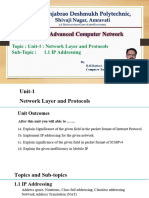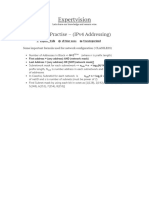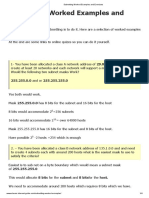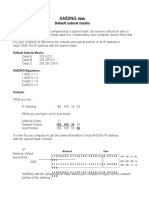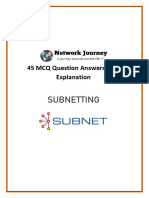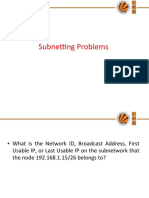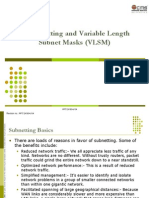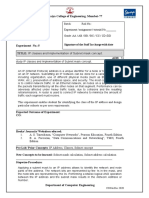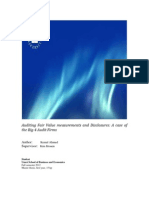0% found this document useful (0 votes)
43 views4 pagesSubnet Supernet Questions
The document provides detailed calculations for subnet masks and supernetting for various classes of IP addresses. It includes examples for Class A, B, and C networks, detailing how to determine the required subnet masks based on the number of subnets needed and how to combine multiple Class C networks into supernets. Key formulas and results for each scenario are presented clearly, illustrating the process of subnetting and supernetting.
Uploaded by
gouravbaghel132Copyright
© © All Rights Reserved
We take content rights seriously. If you suspect this is your content, claim it here.
Available Formats
Download as PDF, TXT or read online on Scribd
0% found this document useful (0 votes)
43 views4 pagesSubnet Supernet Questions
The document provides detailed calculations for subnet masks and supernetting for various classes of IP addresses. It includes examples for Class A, B, and C networks, detailing how to determine the required subnet masks based on the number of subnets needed and how to combine multiple Class C networks into supernets. Key formulas and results for each scenario are presented clearly, illustrating the process of subnetting and supernetting.
Uploaded by
gouravbaghel132Copyright
© © All Rights Reserved
We take content rights seriously. If you suspect this is your content, claim it here.
Available Formats
Download as PDF, TXT or read online on Scribd
/ 4






